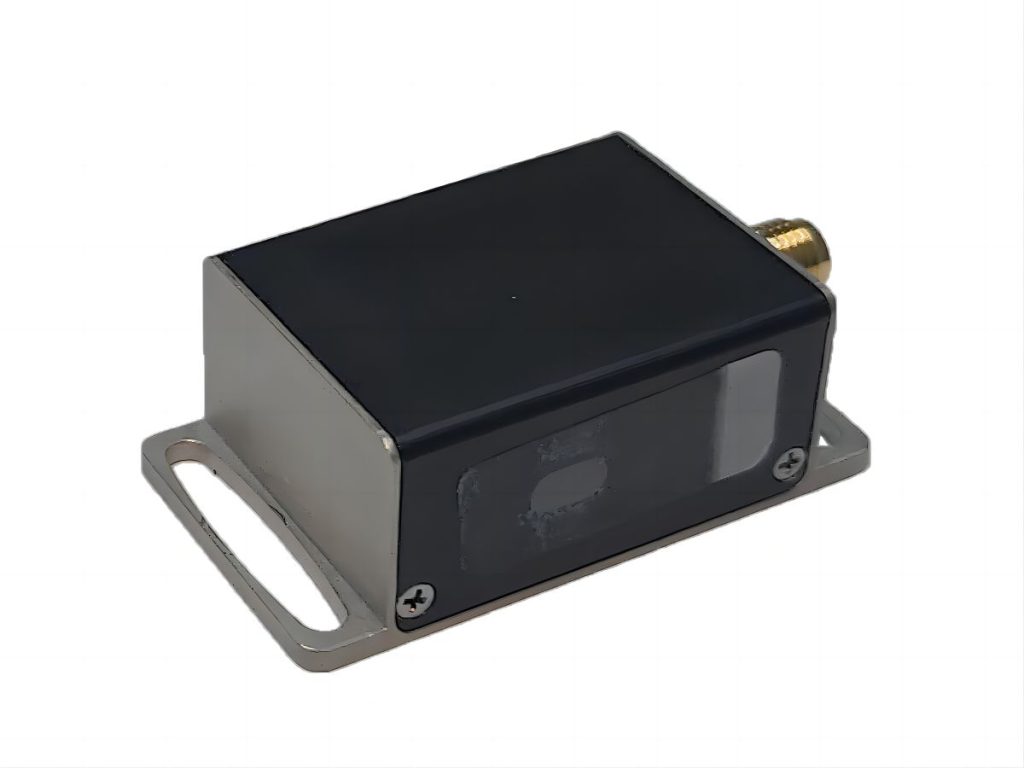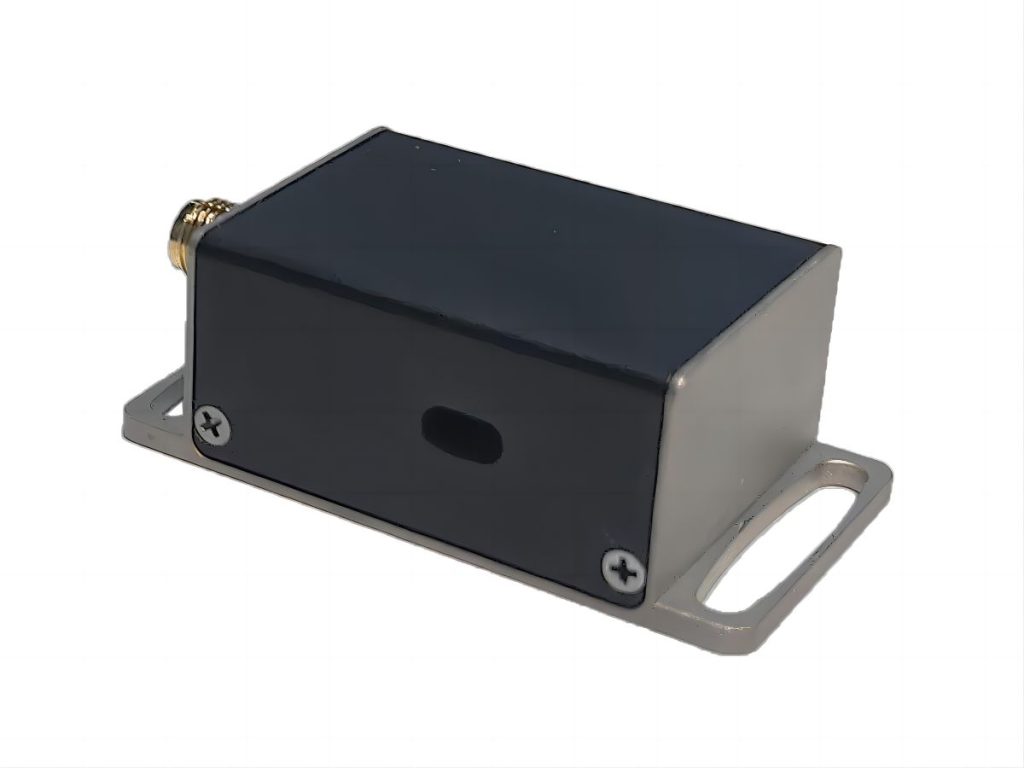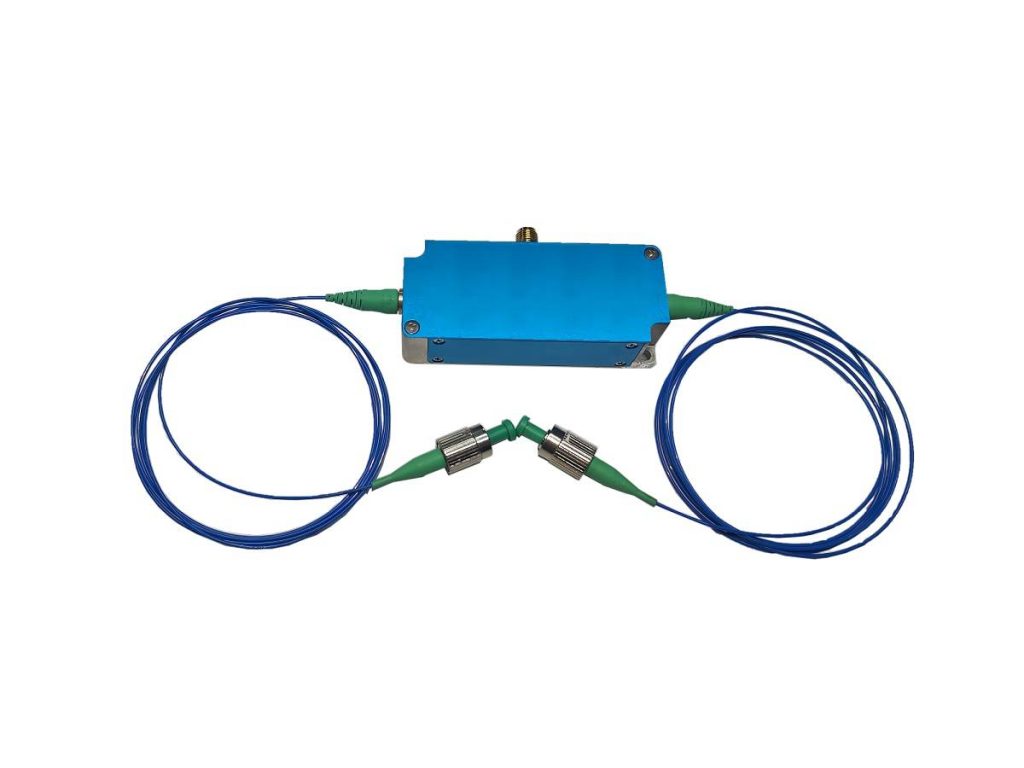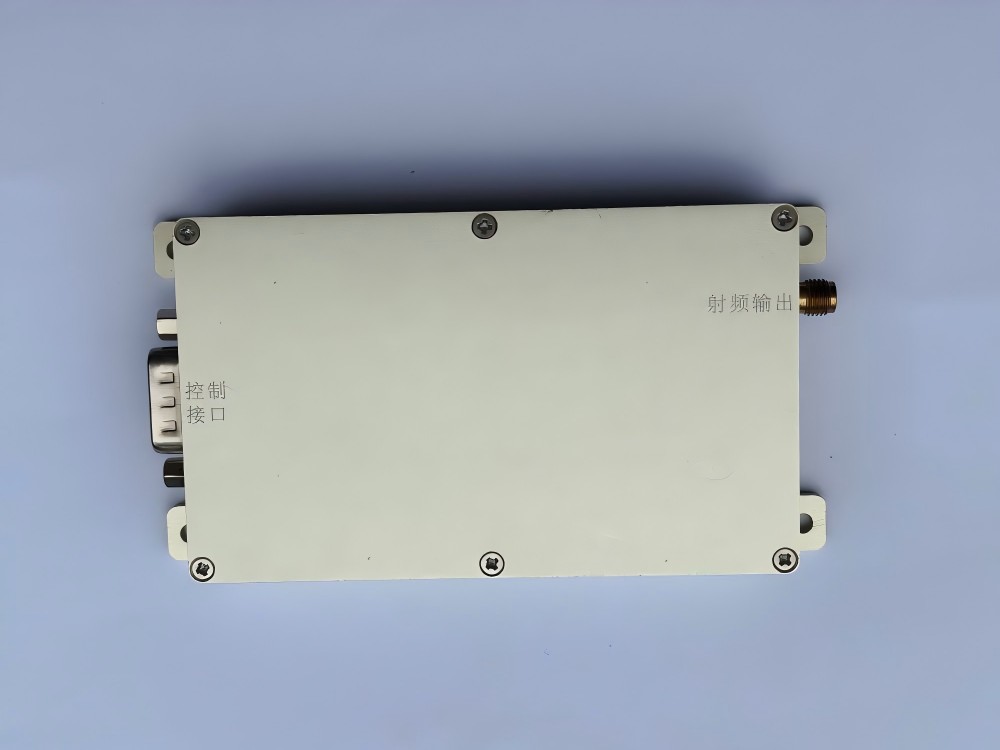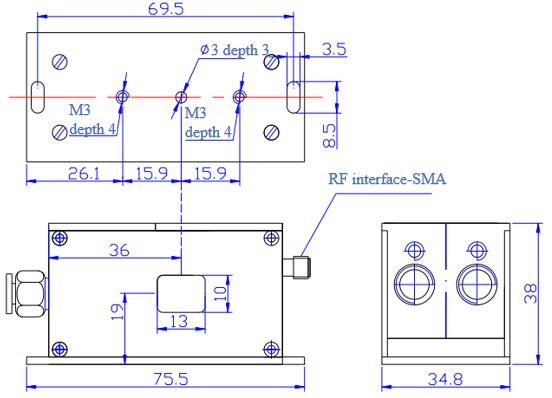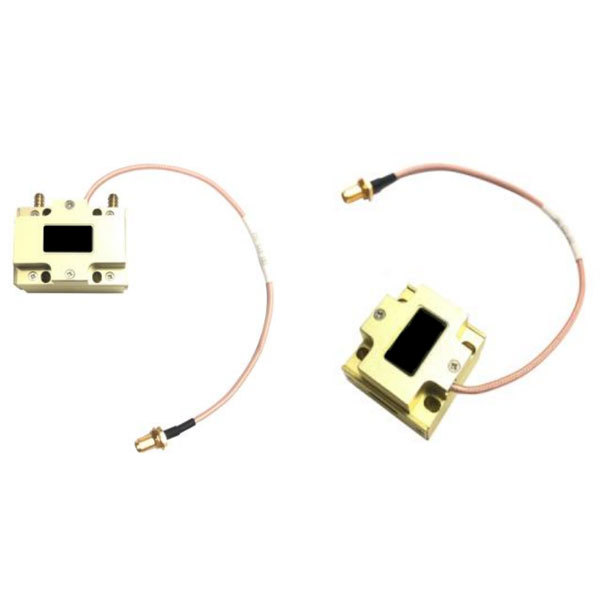Functional Differences Between Acousto-Optic Modulators and Acousto-Optic Deflectors
Acousto-optic devices, specifically acousto-optic modulators (AOMs) and acousto-optic deflectors (AODs), have become indispensable tools in modern photonics, laser technology, and optical signal processing. Their ability to manipulate light beams with high speed and precision has enabled numerous applications across diverse fields, including telecommunications, material processing, imaging, and spectroscopy. While both AOMs and AODs leverage the acousto-optic effect, their primary functions diverge significantly, leading to distinct operational characteristics and application domains. This article aims to provide a comprehensive analysis of the functional differences between AOMs and AODs, elucidating the underlying principles and practical implications of their respective designs.

How Do Both AOM and AOD Utilize the Acousto-optic Effect?
At the heart of both AOMs and AODs lies the acousto-optic effect, a phenomenon wherein an acoustic wave propagating through a transparent medium induces a refractive index modulation. This modulation arises from the mechanical strain associated with the acoustic wave, which alters the material’s density and, consequently, its refractive index. The result is a periodic variation in the refractive index, forming a moving diffraction grating.
When a light beam is incident on this grating, it undergoes diffraction, splitting into multiple beams propagating at different angles. The angles and intensities of these diffracted beams are determined by the acoustic frequency, wavelength, and power, as well as the optical wavelength and the acousto-optic interaction geometry. Both AOMs and AODs utilize this fundamental principle to manipulate light, but they do so in distinct ways tailored to their specific applications.
What is the Role of the Acoustic Wave in AOM and AOD?
The acoustic wave serves as the driving force behind the acousto-optic interaction. In both AOMs and AODs, a piezoelectric transducer, bonded to the acousto-optic medium, generates the acoustic wave in response to an applied radio frequency (RF) signal. The frequency of the acoustic wave, denoted as fa, is crucial, as it directly influences the grating period and, consequently, the diffraction angles. The relationship between acoustic frequency (fa ), acoustic velocity (va), and acoustic wavelength (λa) is given by:
λa=va/fa
The acoustic wave propagates through the medium, creating a periodic variation in refractive index, which can be expressed as:
n(x,t)=n0+Δnsin(2πfat−2πx/λa)
where n0 is the unperturbed refractive index, Δn is the amplitude of the refractive index modulation, x is the spatial coordinate, and t is time. The spatial periodicity of this refractive index modulation forms the diffraction grating.
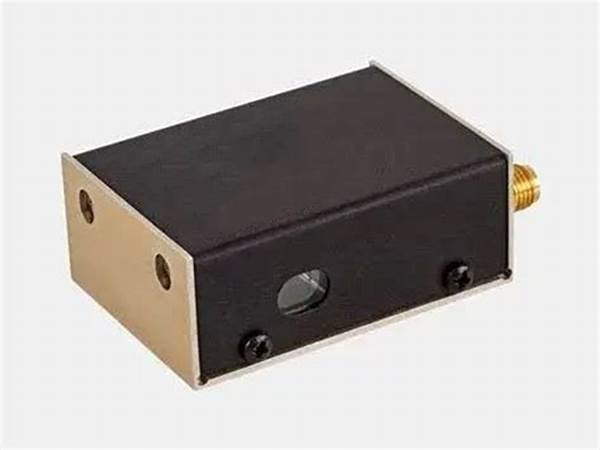
What are the Differences Between Modulation and Deflection?
1. Acousto-Optic Modulators (AOMs)
The primary function of an AOM is to modulate the intensity of a laser beam. This is achieved by controlling the amplitude of the diffracted beam. When a light beam passes through the AOM, it is diffracted into multiple orders. By adjusting the RF power applied to the transducer, the amplitude of the acoustic wave, and thus the strength of the refractive index grating, can be varied. This, in turn, controls the intensity of the diffracted light.
Typically, AOMs are operated in the Bragg regime, where the incident light is diffracted predominantly into a single diffracted order, often the first order. The intensity of this diffracted beam is directly proportional to the RF power, allowing for precise control of the output light intensity. The zero order beam is also used, and the power in the zero order beam is inversely proportional to the RF power.
The acoustic wave’s frequency in AOMs is often fixed, with the primary control parameter being the RF amplitude. This enables applications such as Q-switching, pulse picking, and amplitude modulation in laser systems. Furthermore, by changing the frequency of the RF signal, the frequency of the diffracted light is shifted by an amount equal to the acoustic frequency. This frequency shifting capability is invaluable in applications like laser Doppler velocimetry and heterodyne detection.
2. Acousto-Optic Deflectors (AODs)
In contrast, AODs are designed to spatially deflect a laser beam. The deflection angle is controlled by varying the frequency of the RF signal applied to the transducer. The relationship between the deflection angle (θ) and the acoustic frequency (fa) is given by:
sin(θ)=λfa/va
where λ is the optical wavelength. By changing the acoustic frequency, the grating period is altered, resulting in a change in the diffraction angle. This enables precise control over the beam’s direction, making AODs ideal for applications requiring beam scanning and steering.
AODs are also typically operated in the Bragg regime to maximize the diffraction efficiency into the desired order. The ability to rapidly change the deflection angle by varying the RF frequency makes AODs suitable for applications such as laser scanning microscopy, optical trapping, and laser projection systems.
3. Direct Comparison
| Feature | Acousto-Optic Modulator (AOM) | Acousto-Optic Deflector (AOD) |
| Primary Function | Intensity modulation | Beam deflection |
| Controlled Parameter | Light intensity | Deflection angle |
| Acoustic Parameter | Amplitude and frequency | Frequency primarily |
| Output Beam | First-order diffracted beam (modulated intensity) | First-order diffracted beam (deflected spatially) |
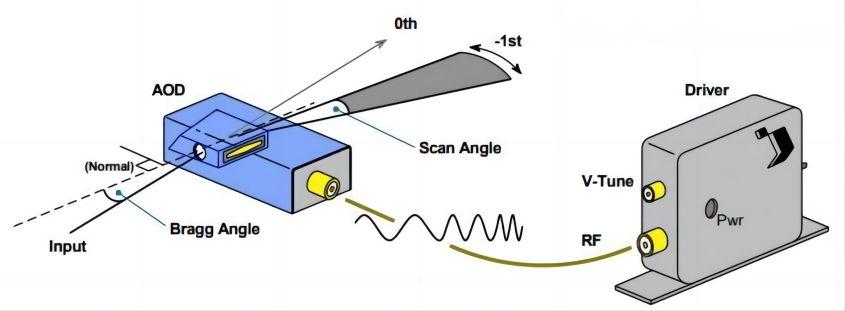
How Does the Output Beam Differ Between AOM and AOD?
Acousto-Optic Modulators (AOMs)
Varying the amplitude of the RF driving signal in AOMs directly affects the intensity of the diffracted light. Higher RF amplitudes result in stronger acoustic waves, leading to higher diffraction efficiencies and increased diffracted light intensity. The relationship between the RF power and the diffracted light intensity is typically linear within a certain range, allowing for precise control.
The frequency of the RF signal in AOMs primarily determines the frequency shift of the diffracted light. By changing the acoustic frequency, the frequency of the diffracted light is shifted by an amount equal to the acoustic frequency. This frequency shifting capability is essential for applications like laser Doppler velocimetry and heterodyne detection.
Acousto-Optic Deflectors (AODs)
In AODs, varying the frequency of the RF driving signal directly affects the angle of the deflected light. Higher frequencies result in larger deflection angles, and vice versa. The relationship between the RF frequency and the deflection angle is linear within a certain range, enabling precise control over the beam’s direction.
While the primary control parameter in AODs is the RF frequency, the amplitude of the RF signal also affects the intensity of the deflected light. Higher RF amplitudes result in stronger acoustic waves and increased diffraction efficiencies, leading to higher deflected light intensity.
How are the Output Beam Characteristics in Each Device?
Acousto-Optic Modulators (AOMs)
The output beam of an AOM is characterized by its modulated intensity and potential frequency shift. The diffracted beam’s intensity is controlled by the RF power, allowing for precise amplitude modulation. The frequency of the diffracted light is shifted by an amount equal to the acoustic frequency, enabling applications requiring frequency control.
AOMs produce multiple diffraction orders, but typically, only one or two orders (zero and first) are used. The zero order beam is the undiffracted light, while the first order beam is the primary diffracted beam. The choice of which order to use depends on the specific application.
Acousto-Optic Deflectors (AODs)
The output beam of an AOD is characterized by its deflected angle, which is controlled by the RF frequency. The angle of deflection is proportional to the acoustic frequency, allowing for precise beam steering and scanning.
AODs also produce multiple diffraction orders, but typically, the first order is used for deflection. The ability to rapidly change the deflection angle by varying the RF frequency enables applications requiring high-speed beam scanning and steering.

What are the Applications of AOMs and AODs?
1. Acousto-Optic Modulators (AOMs): Versatile Tools for Light Manipulation
AOMs are integral components in a diverse range of applications, leveraging their ability to precisely control the intensity and frequency of laser light. Key applications include:
- Laser Processing: Precise control of pulse duration and repetition rate via Q-switching for material processing and machining.
- Optical Telecommunications: High-speed modulation of optical signals for efficient data transmission in fiber optic networks.
- Spectroscopy: Frequency shifting and amplitude modulation for advanced spectroscopic techniques, including laser Doppler velocimetry.
- Pulse Selection: Individual pulse extraction from high-repetition-rate laser sources for ultrafast optics and time-resolved measurements.
2. Acousto-Optic Deflectors (AODs): Enabling Dynamic Beam Steering and Spatial Control
AODs excel in applications requiring precise spatial control of laser beams, including:
- Laser Scanning Systems: Rapid and accurate beam deflection for laser scanning microscopy and laser projection, enabling high-resolution imaging and display.
- Optical Trapping and Manipulation: Precise control of beam position for trapping and manipulating microscopic particles, crucial in biophysics and nanotechnology.
- Image Processing: Dynamic beam steering for spatial light modulation and image manipulation in optical processing systems.
In conclusion, acousto optic modulators and acousto optic deflectors are powerful tools that leverage the acousto-optic effect to manipulate light. While both devices share the same fundamental principle, their primary functions diverge significantly. AOMs are designed for intensity modulation and frequency shifting, while AODs are designed for spatial deflection and beam steering. The choice between AOMs and AODs depends on the specific application requirements, highlighting the versatility of acousto-optic technology in modern photonics. Their impact continues to grow as optical technologies advance.

